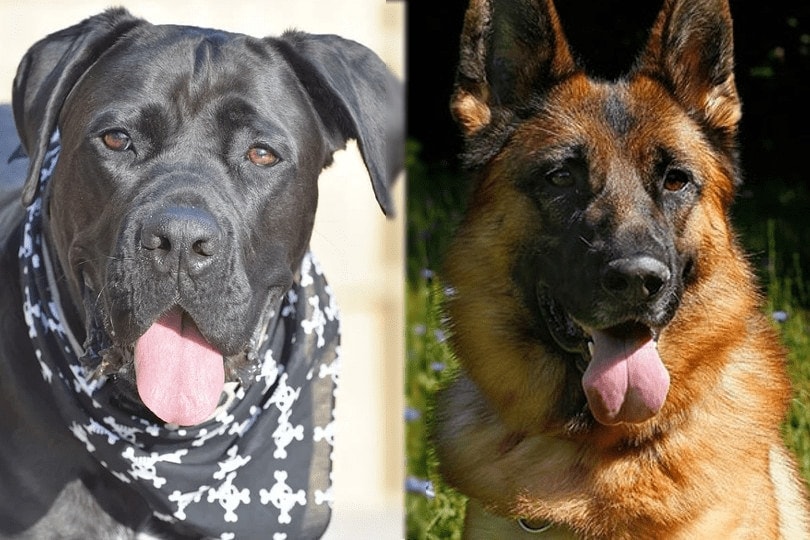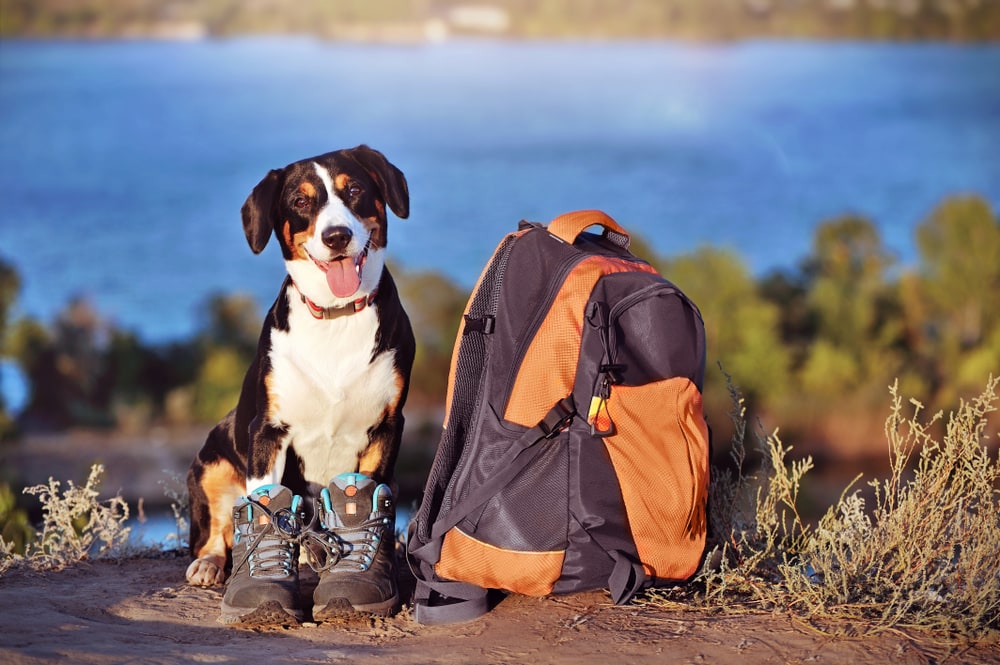Dalmatian Schnauzer Mix: Pictures, Care Guide, Temperament & Traits

Updated on
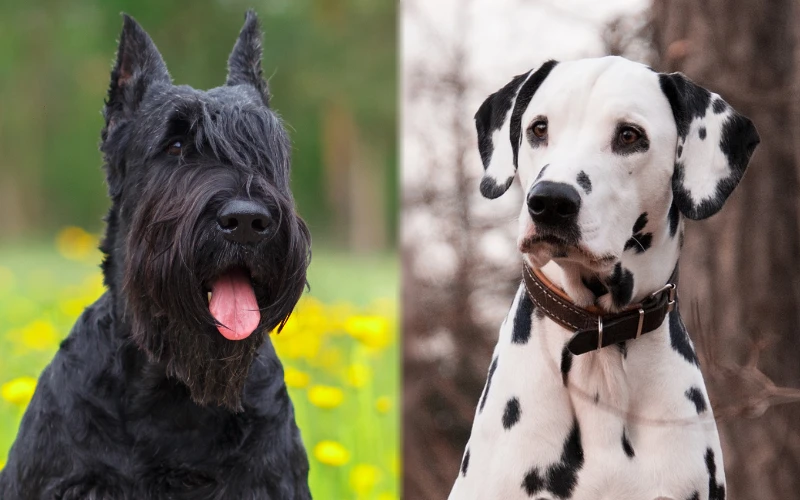
Click to Skip Ahead
The Dalmatian Schnauzer is a unique combination of the elegant, spotted coach dog and the stately, bewhiskered farm dog. The former has been used as a companion for carriages of nobles and later firefighters, while the Schnauzer was bred as a working farm dog. The trait they share is protectiveness, leading to a mix that’s alert, intelligent, and loyal. Both breeds are extremely athletic and make great companions for the right owners.
Learn more about what you can expect from a Dalmatian Schnauzer mix, what traits these dogs may have, and what their care requires.
| Height: | 17–24 inches |
| Weight: | 35–70 pounds |
| Lifespan: | 12–15 years |
| Colors: | White with black spots, salt and pepper |
| Suitable for: | Active families, single owners, and some families with older children |
| Temperament: | Intelligent, energetic, strong-willed, stubborn |
The Dalmatian Schnauzer mix is a gamble. It can take on the traits of either or both parent breeds, leading to a medium or a large dog. It’s difficult to predict how it will look as well. Some puppies may have spotted coats like a Dalmatian but with a signature Schnauzer wiry coat and “beard”, while others may be smooth like a Dalmatian with a salt-and-pepper coat.
Dalmatian Schnauzer Breed Characteristics
Dalmatian Schnauzer Puppies

Dalmatian Schnauzers are a mixed breed that produces an interesting dog, but they haven’t quite caught on as a new “designer” breed the way Goldendoodles or Shihpoos have. It may be difficult to find breeders offering Dalmatian Schnauzer puppies as part of an organized breeding rather than an accidental one. Because of this, the puppies can range in price from “free to a good home” to thousands of dollars.
Once breeds like this become popular, they tend to pop up in puppy mills for top dollar. Though it may be tempting, adopting a puppy mill dog comes with risks to the dog’s health and mental well-being 1. It also contributes to a horrible, abusive practice that includes inbreeding, filthy conditions, overcrowding, disease, starvation, and more, all in the pursuit of making a quick sale of puppies. It’s best to look for Dalmatian Schnauzer mixes from shelters or rescues if possible. If you find an adult, you’ll have a better idea of the dog’s size and temperament as well.
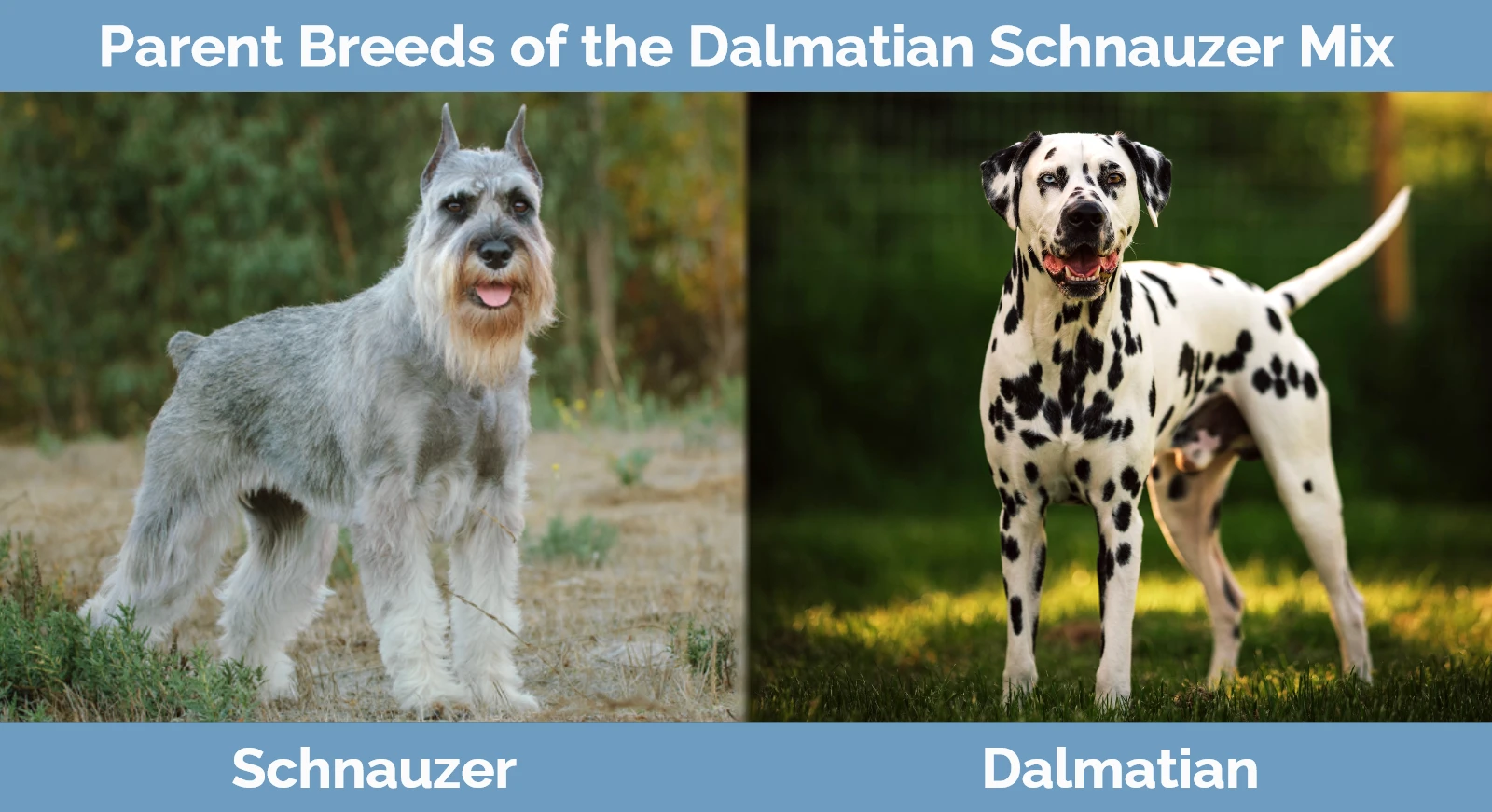
Temperament & Intelligence of the Dalmatian Schnauzer 🧠
Are These Dogs Good for Families? 👪
Both Dalmatians and Schnauzers can be a good choice for some families. Children must be taught to engage appropriately with the dog, however, as neither of these breeds tolerate mistreatment (even by accident). Because Dalmatians were overbred following the release of 101 Dalmatians—and then the live-action remake—some of these dogs have behavioral issues that can include aggression. Be sure to supervise interactions between children and the dog.
Does This Breed Get Along With Other Pets?
Dalmatians and Schnauzers both have a high prey drive, so they may be inclined to chase cats, small dogs, and small pets like birds, rabbits, or guinea pigs. It’s best to supervise interactions, at least initially, until you see how the dog handles the situation. With other dogs, it’s likely that the mixed dog will get along fine with proper training and socialization.

Things to Know When Owning a Dalmatian Schnauzer:
Food & Diet Requirements 🦴
Regardless of which parent breed your dog takes after, it will do well on a high-quality dog food that’s appropriate for its life stage and activity level. Because both Dalmatians and Schnauzers tend to be active dogs, it’s important to balance their need for nourishment without overfeeding, which can lead to obesity and a host of related health conditions—particularly in the Dalmatian. For treats, stick to high-quality commercial treats.
Exercise 🐕
Though they come from different backgrounds, Dalmatians and Schnauzers are both lively dogs that require a lot of exercise. It’s likely that a mixed puppy will share this desire to stay active and perform. Some of the activities that this breed may excel at include fetch, hiking, jogging or running, and agility. Full-blooded Schnauzers also excel at performance sports like barn hunting, lure coursing, and herding, so it’s possible that a puppy with this parent breed may also do well in canine sports.
Training 🎾
Dalmatians and Schnauzers are highly intelligent dogs that take well to training and respond best to positive reinforcement methods. Dalmatians can be sensitive, and Schnauzers may hold a grudge, so it’s essential to avoid punishment or any harsh training methods. Early socialization is important for both breeds and can help a puppy grow into a well-mannered adult.

Grooming ✂️
The grooming needs of a Dalmatian Schnauzer depend on which parent breed it takes after. Dalmatians have a smooth coat that’s easy to care for with regular brushing, whereas Schnauzers have longer, wiry coats that may require more brushing and bathing to keep them clean and healthy. These dogs also need regular nail trimmings to keep joints in good condition and avoid injury. Regular ear cleaning is part of grooming, but it’s even more important if your dog has the floppy ears of a Dalmatian.
Health and Conditions ❤️
Schnauzers are a very healthy breed that doesn’t have a lot of genetic health conditions, but the Dalmatian is not. Deafness is common in the breed, so it’s possible for a Dalmatian Schnauzer mix to have partial or complete deafness. Kidney stones are also common in Dalmatians and may require permanent prescription food or medication to manage it, which can get pricey. Genetic testing from reputable breeders can reduce the risk of some of these health conditions.
- Partial or complete deafness
- Skin conditions
- Hip dysplasia
- Kidney stones
- Eye disorders
- Cardiomyopathy
Male vs Female
There’s little difference between a male and female Dalmatian Schnauzer. It’s possible that a male dog will be a little larger than a female, but it’s difficult to predict with the combination of large and medium parent breeds. Some believe that there are inherent differences in the behavior of a male vs. a female dog, but most of the problem behaviors associated with sex (marking, roaming, aggression, etc.) can be reduced with spaying or neutering. In addition to helping your dog’s behavior, spaying and neutering can prevent health conditions related to sex hormones, such as cancers of the reproductive organs and infections.
3 Little-Known Facts About the Dalmatian Schnauzer
1. Dalmatians Have Mysterious Origins
It’s not clear where Dalmatians originated because they have been companions of Romani people, who are historically nomadic. The name “Dalmatian” comes from Dalmatia in Austria, though that may simply be where the breed gained popularity and not where it originated.
2. The Schnauzer Beard Is a Functional Feature
Like the Dalmatian’s spots, the Schnauzer’s beard is a signature feature that makes them recognizable. However, it also serves an important function for these historic ratters—protection. The thick beard or whiskers of the Schnauzer would mat together, creating a barrier that protected the dog’s sensitive mouth and snout from being bitten by rats and other rodents they hunted on farms. That said, if your Dalmatian Schnauzer puppy doesn’t inherit the beard, it’s no less capable of a hunter or ratter.
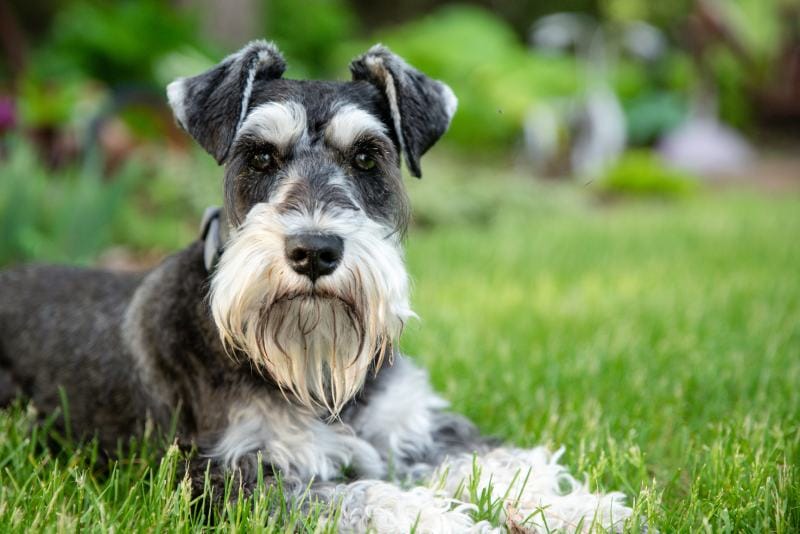
3. Dalmatians and Schnauzers Are Both Utility Players
Some dog breeds are bred for a narrow and specific purpose. Dalmatians and Schnauzers have served many purposes over their breed histories, including work as farm dogs for herding, ratting, and hunting. The Dalmatian is unique in that it’s the only dog breed that was purpose-bred for coaching, which is to run alongside a stagecoach and clear crowds to make way for horse-drawn outfits. This led to their most-famous role as a firehouse mascot.
Final Thoughts
The Dalmatian Schnauzer is a unique combination of two distinctive dog breeds. Though they look quite different, the Dalmatian and the Schnauzer share many traits that will likely show up in a litter of puppies, including intelligence, loyalty, liveliness, and protectiveness. While it’s difficult to predict how big this mix will be or exactly which parent breed it will take after in looks, it’s likely that a Dalmatian Schnauzer puppy will become a strong, active, and loyal companion for active owners or families who commit to proper training and enrichment.
Featured Image Credit: Left – Pulikina Olga, Shutterstock | Right – RebeccasPictures, Pixabay



